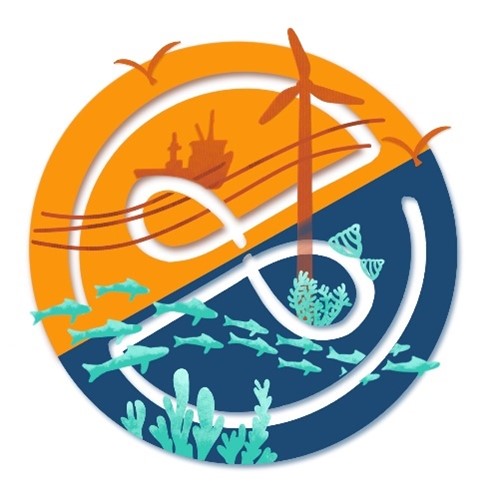
Offshore renewable energy projects, including offshore wind, wave, and tidal energy, are expanding rapidly all over the world. Whether they are on a commercial or pilot scale, offshore renewable energy projects are raising many questions from the public and stakeholders in the sea and coastal areas about their potential effects on the environment, marine ecosystems, and society.
Created in 2018, the COME3T (Committee of experts for offshore renewable energies environmental and socio-economic issues) initiative aims to provide answers to some of the main environmental and socio-economic effects inherent in the development of offshore renewables. The main objectives of the project are to:
- Provide expert assessments, summaries, and recommendations on the environmental and socio-economic issues associated with the development of offshore renewables by setting up committees of neutral and independent experts; and
- Set up a unique network of scientific experts.
The COME3T initiative is supported by France Énergies Marines, the French Institute for Energy Transition dedicated to offshore renewables, whose mission is to remove the barriers to the development of offshore renewable energy through research and innovation.
COME3T is structured around 3 distinct entities with clearly defined roles. Coordination is managed by France Énergies Marines, which is responsible for the monitoring and operational implementation of the initiative (calls, drafting of bulletins, etc.). The steering committee brings together all the partners (clusters and consultancies, developers, NGOs, State and government institutions, regions, scientists and academics) and selects the scientific topics to be addressed. The expert committees bring together scientists selected for their expertise. Neutral and independent, these committees must examine the questions posed in depth and provide scientific and factual answers.
For each topic identified, summaries are produced in the form of illustrated bulletins.
To date, the COME3T initiative has resulted in the publication of 10 bulletins dealing mainly with environmental effects:
- Dangerous waves (Bulletin n°1, Can fixed-foundation offshore wind farms generate dangerous waves?)
- Non-indigenous species (Bulletin n°2, Does the colonisation of offshore renewable energy farms facilitate the introduction and spread of non-indigenous species?)
- Reef effect (Bulletin n°3, The reef effect induced by wind farms and their grid connection)
- Marine mammals (Bulletin n°4, How can the impacts of an operating wind farm on marine mammals be assessed?)
- Effect of noise (Bulletin n°5, To study the effect on marine ecosystems of noise emitted by offshore wind farms during construction and operation phases, is it relevant to focus on a few species?)
- Evolution of coastline (Bulletin n°6, Can the development of offshore renewable energy projects and their shore connection have an effect on the evolution of the coastline?)
- Electromagnetic fields (Bulletin n°7, What are the potential effects of the electromagnetic fields produced by offshore wind farm power cables on marine organisms?)
- Galvanic anodes (Bulletin n°8, Do the metals released by galvanic anodes used in offshore wind farms pose a risk to the marine environment?)
- Risk of entanglement (Bulletin n°9, Can floating offshore wind farms pose a risk of entanglement and injury to marine megafauna?)
- Fish and their essential habitats (Bulletin n°10, What are the potential effects of offshore wind farms on coastal fish and their essential habitats?)
The COME3T bulletins are available in French and English on the France Énergies Marines and Tethys websites. Popularisation videos are also available in French. Lasting around 2 minutes each, they summarise the environmental effects raised in the bulletins in a simple and visual way. This short format makes it easier for the public to understand the topics covered.
In 2023, the third phase of the COME3T project was launched for 2 years with a total budget of €200k from public (65%) and private (35%) investment, bringing together 22 partners (including 9 financiers).
By the end of this third phase (2025), 8 new bulletins will be published. The first topics selected include: maritime spatial planning, the use of offshore wind farms by birds, life-cycle analysis of wind farms, the effects of wind farms on primary production, and the effects of turbidity on ecosystems.
The fourth phase of the COME3T initiative (2026-2028) will aim to produce 8 additional bulletins and expand the range of available educational tools to continue its contribution to the dissemination of scientific knowledge on the environmental and socio-economic effects of offshore renewable energy development.
